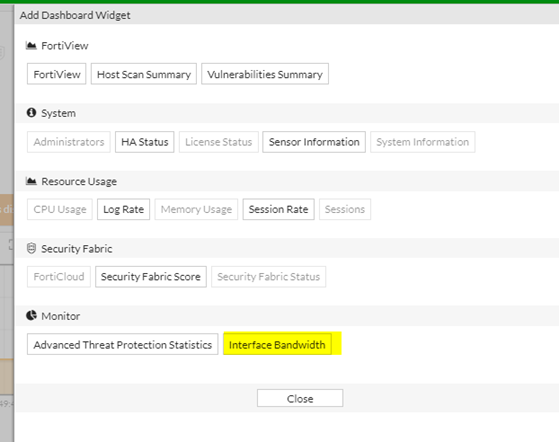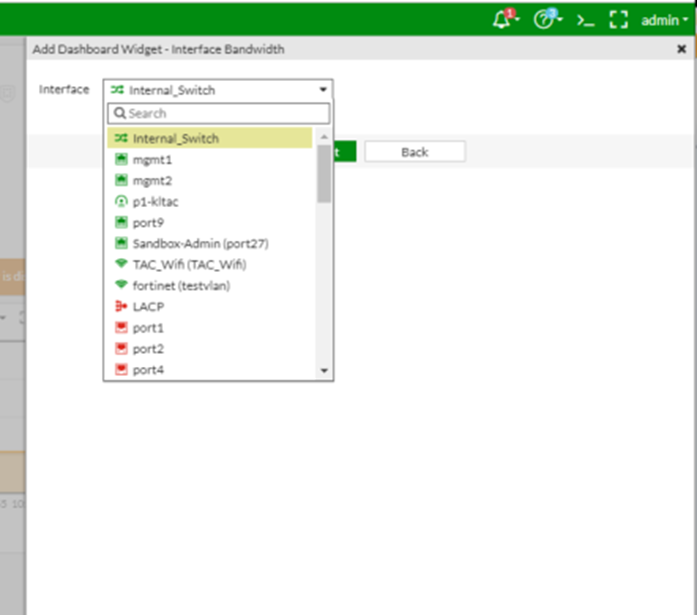- Forums
- Knowledge Base
- Customer Service
- FortiGate
- FortiClient
- FortiAP
- FortiAnalyzer
- FortiADC
- FortiAuthenticator
- FortiBridge
- FortiCache
- FortiCarrier
- FortiCASB
- FortiConnect
- FortiConverter
- FortiCNP
- FortiDAST
- FortiDDoS
- FortiDB
- FortiDNS
- FortiDeceptor
- FortiDevSec
- FortiDirector
- FortiEDR
- FortiExtender
- FortiGate Cloud
- FortiGuard
- FortiHypervisor
- FortiInsight
- FortiIsolator
- FortiMail
- FortiManager
- FortiMonitor
- FortiNAC
- FortiNAC-F
- FortiNDR (on-premise)
- FortiNDRCloud
- FortiPAM
- FortiPortal
- FortiProxy
- FortiRecon
- FortiRecorder
- FortiSandbox
- FortiSASE
- FortiScan
- FortiSIEM
- FortiSOAR
- FortiSwitch
- FortiTester
- FortiToken
- FortiVoice
- FortiWAN
- FortiWeb
- Wireless Controller
- RMA Information and Announcements
- FortiCloud Products
- ZTNA
- 4D Documents
- Customer Service
- Community Groups
- Blogs
FortiGate
FortiGate Next Generation Firewall utilizes purpose-built security processors and threat intelligence security services from FortiGuard labs to deliver top-rated protection and high performance, including encrypted traffic.
- Fortinet Community
- Knowledge Base
- FortiGate
- Technical Tip: Basic Troubleshooting on high memor...
Options
- Subscribe to RSS Feed
- Mark as New
- Mark as Read
- Bookmark
- Subscribe
- Printer Friendly Page
- Report Inappropriate Content
Description
This article describes how to troubleshoot high CPU or high memory usage.
Scope
Solution
Access FortiGate via CLI and run these commands (make sure that the issue is occurring when these commands are running):
This article describes how to troubleshoot high CPU or high memory usage.
Scope
Solution
Access FortiGate via CLI and run these commands (make sure that the issue is occurring when these commands are running):
1) #diag sys top 1 10 <----- This shows top 10 high usage daemons of the FortiGate.Sample Result :
The 4th column from the left is for CPU usage percentage and 5th column from the left is the memory usage percentage.
Daemon causing the high CPU or high memory usage will be shown:
Run Time: 22 days, 2 hours and 13 minutes
0U, 0N, 0S, 100I, 0WA, 0HI, 0SI, 0ST; 16064T, 11481F
miglogd 269 S 0.4 0.1
ipsengine 286 S < 0.0 0.7
ipsengine 287 S < 0.0 0.6
ipsengine 292 S < 0.0 0.6
ipsengine 289 S < 0.0 0.6
ipsengine 288 S < 0.0 0.6
ipsengine 290 S < 0.0 0.6
ipsengine 291 S < 0.0 0.6
updated 209 S 0.0 0.3
miglogd 184 S 0.0 0.2
2) #get sys perf stat <----- This shows the CPU and memory total usage percentage and also the concurrent connection of the FortiGate. It would be advisable to run this command 5x.
Sample Result:CPU states: 0% user 0% system 0% nice 100% idle 0% iowait 0% irq 0% softirq
CPU0 states: 0% user 0% system 0% nice 100% idle 0% iowait 0% irq 0% softirq
CPU1 states: 0% user 0% system 0% nice 100% idle 0% iowait 0% irq 0% softirq
CPU2 states: 1% user 0% system 0% nice 99% idle 0% iowait 0% irq 0% softirq
CPU3 states: 0% user 0% system 0% nice 100% idle 0% iowait 0% irq 0% softirq
CPU4 states: 0% user 0% system 0% nice 100% idle 0% iowait 0% irq 0% softirq
CPU5 states: 0% user 0% system 0% nice 100% idle 0% iowait 0% irq 0% softirq
CPU6 states: 0% user 0% system 0% nice 100% idle 0% iowait 0% irq 0% softirq
CPU7 states: 0% user 0% system 0% nice 100% idle 0% iowait 0% irq 0% softirq
Memory: 16450308k total, 4570304k used (27%), 11880004k free (73%)
Average network usage: 87 / 77 kbps in 1 minute, 173 / 163 kbps in 10 minutes, 1213 / 1203 kbps in 30 minutes
Average sessions: 200 sessions in 1 minute, 215 sessions in 10 minutes, 253 sessions in 30 minutes
Average session setup rate: 4 sessions per second in last 1 minute, 3 sessions per second in last 10 minutes, 3 sessions per second in last 30 minutes
Average NPU sessions: 0 sessions in last 1 minute, 0 sessions in last 10 minutes, 0 sessions in last 30 minutes
Average nTurbo sessions: 0 sessions in last 1 minute, 0 sessions in last 10 minutes, 0 sessions in last 30 minutes
Virus caught: 0 total in 1 minute
IPS attacks blocked: 0 total in 1 minute
Uptime: 22 days, 2 hours, 17 minutes3) #diag debug crashlog read <----- This shows if there are any crash logs for the daemon which are causing the FortiGate high CPU or high MEM usage.Sample Result:290: 2019-11-18 18:20:42 scanunit=manager pid=207 str="AV database changed (1); restarting workers"4) Enable the Interface Bandwidth monitoring on the FortiGate Dashboard.
291: 2019-11-18 18:20:42 <00207> scanunit=manager str="Success loading anti-virus database."
292: 2019-11-18 19:21:52 scanunit=manager pid=207 str="AV database changed (1); restarting workers"
293: 2019-11-18 19:21:52 <00207> scanunit=manager str="Success loading anti-virus database."
294: 2019-11-18 19:26:17 the killed daemon is /bin/pyfcgid: status=0x0
295: 2019-11-18 20:20:23 scanunit=manager pid=207 str="AV database changed (1); restarting workers"
296: 2019-11-18 20:20:23 <00207> scanunit=manager str="Success loading anti-virus database."
297: 2019-11-18 22:20:20 scanunit=manager pid=207 str="AV database changed (1); restarting workers"
298: 2019-11-18 22:20:20 <00207> scanunit=manager str="Success loading anti-virus database."
299: 2019-11-18 23:47:06 scanunit=manager pid=207 str="AV database changed (1); restarting workers"
300: 2019-11-18 23:47:07 <00207> scanunit=manager str="Success loading anti-virus database."
301: 2019-11-18 23:57:28 the killed daemon is /bin/pyfcgid: status=0x100
302: 2019-11-19 00:42:31 scanunit=manager pid=207 str="AV database changed (1); restarting workers"
303: 2019-11-19 00:42:31 <00207> scanunit=manager str="Success loading anti-virus database."
304: 2019-11-19 00:52:18 the killed daemon is /bin/pyfcgid: status=0x100
305: 2019-11-19 02:20:40 scanunit=manager pid=207 str="AV database changed (1); restarting workers"
306: 2019-11-19 02:20:40 <00207> scanunit=manager str="Success loading anti-virus database."
307: 2019-11-19 04:20:22 scanunit=manager pid=207 str="AV database changed (1); restarting workers"
308: 2019-11-19 04:20:22 <00207> scanunit=manager str="Success loading anti-virus database."
309: 2019-11-19 06:21:25 scanunit=manager pid=207 str="AV database changed (1); restarting workers"
310: 2019-11-19 06:21:25 <00207> scanunit=manager str="Success loading anti-virus database."
311: 2019-11-19 08:20:22 scanunit=manager pid=207 str="AV database changed (1); restarting workers"
312: 2019-11-19 08:20:22 <00207> scanunit=manager str="Success loading anti-virus database."
313: 2019-11-19 10:20:41 scanunit=manager pid=207 str="AV database changed (1); restarting workers"
314: 2019-11-19 10:20:42 <00207> scanunit=manager str="Success loading anti-virus database."
315: 2019-11-19 12:20:32 scanunit=manager pid=207 str="AV database changed (1); restarting workers"
316: 2019-11-19 12:20:32 <00207> scanunit=manager str="Success loading anti-virus database."
317: 2019-11-19 14:20:24 scanunit=manager pid=207 str="AV database changed (1); restarting workers"
318: 2019-11-19 14:20:24 <00207> scanunit=manager str="Success loading anti-virus database."
319: 2019-11-19 16:20:46 scanunit=manager pid=207 str="AV database changed (1); restarting workers"
320: 2019-11-19 16:20:46 <00207> scanunit=manager str="Success loading anti-virus database."
321: 2019-11-19 18:20:19 scanunit=manager pid=207 str="AV database changed (1); restarting workers"
322: 2019-11-19 18:20:19 <00207> scanunit=manager str="Success loading anti-virus database."
323: 2019-11-19 18:47:02 scanunit=manager pid=207 str="AV database changed (1); restarting workers"
324: 2019-11-19 18:47:02 <00207> scanunit=manager str="Success loading anti-virus database."
325: 2019-11-19 18:51:36 the killed daemon is /bin/pyfcgid: status=0x0
Crash log interval is 3600 seconds
Click the setting button underlined in yellow that can be found on the lower right part of the Dashboard and then, click on 'add widget'.Choose interface bandwidth.Choose the interface that are used on the FortiGate.Go to Dashboard to see those interfaces bandwidth usage widget. (On this scenario: MGMT1 and MGMT2 interfaces).Purpose of Interface Bandwidth usage is to see whether there are high bandwidth on the FortiGate that is exceeding the supported traffic.This information might be helpful as well to figure out the cause of High CPU or High Mem.5) Submit all those gathered information to Fortinet TAC by logging in on support.fortinet.com.
Labels:
Broad. Integrated. Automated.
The Fortinet Security Fabric brings together the concepts of convergence and consolidation to provide comprehensive cybersecurity protection for all users, devices, and applications and across all network edges.
Security Research
Company
News & Articles
Copyright 2024 Fortinet, Inc. All Rights Reserved.



